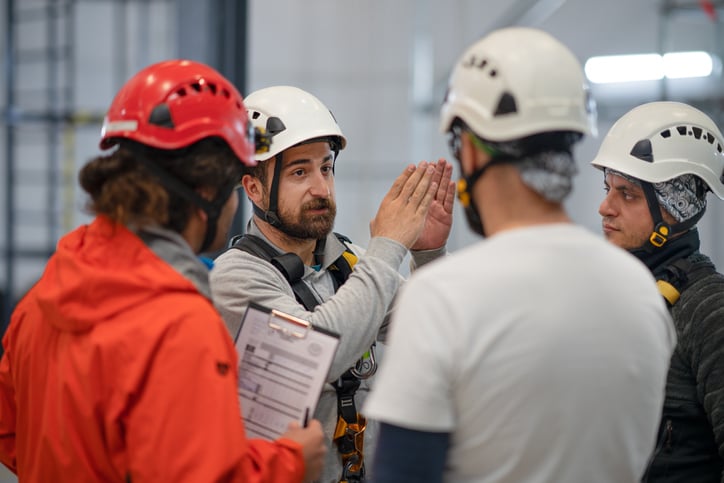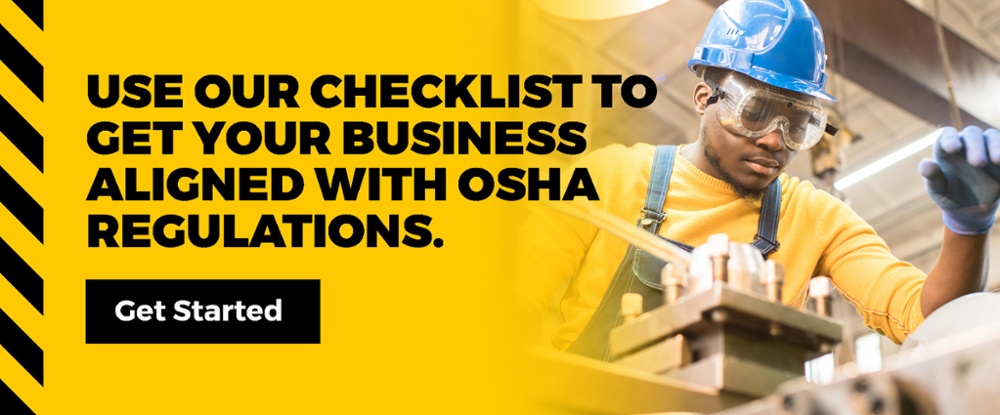Implementing a Safety Risk Management Strategy

What if there was an easier way to identify hazards, minimize risks, and prevent injuries on the job site?
Implementing a safety risk management strategy is one great way to address safety concerns. A risk management strategy does more than point out obvious hazards: it is a system designed to uncover and mitigate safety concerns while providing meaningful guidance. Ranging from identification to training and reporting, it is a varied role. You are open to OSHA violations, fines, and downtime without proper attention. A safety consultant can help improve your risk management strategy and optimize workers’ safety.
What is SAFETY Risk Management?
Risk management is a formal process that identifies, evaluates, and analyzes the risks associated with certain hazards. It goes a step further by taking concrete action to eliminate the hazard or implement risk controls to minimize the potential for injury.
Risk management goes beyond reducing a pre-existing injury rate. It is a proactive method that promotes a positive safety culture and creates a safety program that can generate a significant return on investment (ROI).
As an integral part of a safety program, a risk management system provides a foundation for an ever-changing safety environment. A safety consultant can help guide you through the steps involved in establishing your specific risk management process.
What Does a Safety Consultant Do?
A safety consultant improves your company’s safety programs and practices by minimizing risks in the workplace. They are industry professionals skilled in audits, inspections, implementing safety programs, and training employees. Experts in their field, and safety consultants keep your employees safe and ensure you comply with applicable regulations.
With their unique perspectives and solutions, safety consultants improve your bottom line by keeping you out of trouble and providing you with the tools and information needed to make better safety decisions, regardless of the size of your business.
Consultants are trained to help in all aspects of safety at your workplace while helping your organization meet its objectives and work obligations. They can also:
- Help conduct a safety audit to determine current safety issues and reduce uncertainty in decision-making.
- Address safety concerns through a create a corrective action plan (CAP), including identification, required controls, and potential business consequences for failing to act.
- Mediate conflict between employees/contractors/employers with an industry-specific understanding of safety risk, operational impact, and the overall business risk on all fronts.
- Help train employees in safe work practices while promoting a safety culture and keeping you OSHA compliant.
As a high-value safety partner, a safety consultant is also an effective communicator, making sure each level of employee and management understands the implications of not taking action and generating safety buy-in through the business’s ranks.
There are three major steps to the safety consultant’s process:
Safety Audit and Risk Assessment
Typically, a safety consultant will begin their visit with a tour of the facility. During this tour, they will identify hazards, current controls, potential OSHA violations, and areas of successful safety integrations. This assessment defines what is not working in your safety program while being mindful of productivity, efficiency, and eliminating unnecessary costs.
Safety Development Program
Depending on what the safety consultant finds during the safety audit, they may suggest you make certain adjustments to your existing safety program. They strive to exceed minimum standards while taking your unique needs and challenges into account. Some things your safety development program may include are:
- Immediate corrective action plans
- Creation of a safety committee
- Redesigning reporting and investigation procedures
- Implementing new software for safety efficiency
- Training plans
While some of these steps can take time, your consultant can help make these changes efficiently without compromising the final program. With the full scope of safety management in plain view, you have actionable items to correct and maintain safe practices, improve employee morale, and increase productivity. With improvements to safety efficiency, you will be better prepared and compliant for the next OSHA surprise visit.
Workforce Training
Great consultants should be great communicators who can help provide effective and comprehensive employee training. Poorly designed, sporadic, or expired/outdated safety training leaves gaps in knowledge that can lead to injury. Safety training can include, but is not limited to,
personal risk (including slips and falls); PPE; lockout/tag out; struck-by; machine guarding; and caught-between equipment use unique to your company’s needs; CPR; first aid and emergency response training; working at heights, which is still the greatest cause of accident and injury on job sites; and recertification for expired training.
Consultants can help reinforce this training with continued help, reminders, videos, site visits, and other types of communications. Improved training increases employee buy-in, improves morale and increases productivity while reducing potential compensation costs and OSHA fines.
Related Content: Why Hire a Safety Consultant?
Partner with a Trusted Safety Consultant
As industry experts with years of experience developing unique plans to address any site's needs, your safety consultant has the expertise to improve safety and decrease associated costs. Current knowledge of regulations and upcoming changes keeps you ahead of the safety curve with a flexible system and skilled implementation partner.
In addition to reducing the safety-associated costs, a good safety record can improve your bottom line by indicating you are a low-risk, high-productivity job partner. With a stronger brand value and community standing, you develop a competitive edge that can increase your market share. With the help of a safety consultant, it is possible to create a win-win scenario and a healthy ROI on your safety investment.
SafetyPro can help with Safety Risk Management - Talk to us today
To learn more about the safety services we offer at SafetyPro, check out these services pages:
and all our services here: Safety Management Services from SafetyPro


















